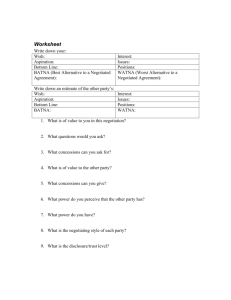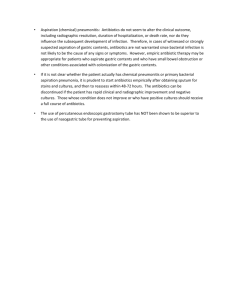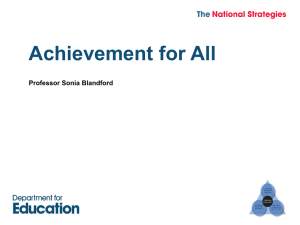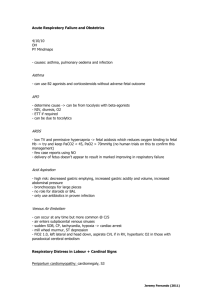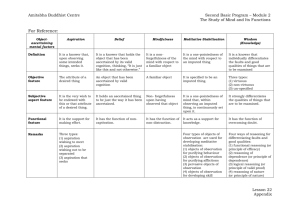Creating Aspirations Statements in the Dream Phase of Appreciative
advertisement
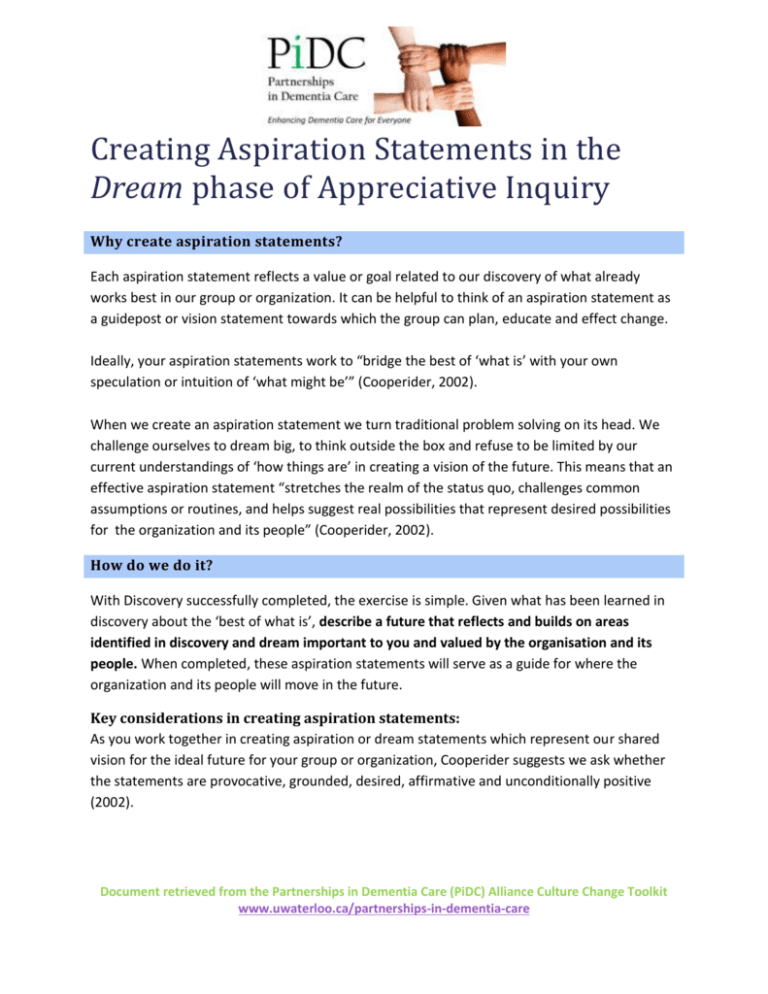
Creating Aspiration Statements in the Dream phase of Appreciative Inquiry Why create aspiration statements? Each aspiration statement reflects a value or goal related to our discovery of what already works best in our group or organization. It can be helpful to think of an aspiration statement as a guidepost or vision statement towards which the group can plan, educate and effect change. Ideally, your aspiration statements work to “bridge the best of ‘what is’ with your own speculation or intuition of ‘what might be’” (Cooperider, 2002). When we create an aspiration statement we turn traditional problem solving on its head. We challenge ourselves to dream big, to think outside the box and refuse to be limited by our current understandings of ‘how things are’ in creating a vision of the future. This means that an effective aspiration statement “stretches the realm of the status quo, challenges common assumptions or routines, and helps suggest real possibilities that represent desired possibilities for the organization and its people” (Cooperider, 2002). How do we do it? With Discovery successfully completed, the exercise is simple. Given what has been learned in discovery about the ‘best of what is’, describe a future that reflects and builds on areas identified in discovery and dream important to you and valued by the organisation and its people. When completed, these aspiration statements will serve as a guide for where the organization and its people will move in the future. Key considerations in creating aspiration statements: As you work together in creating aspiration or dream statements which represent our shared vision for the ideal future for your group or organization, Cooperider suggests we ask whether the statements are provocative, grounded, desired, affirmative and unconditionally positive (2002). Document retrieved from the Partnerships in Dementia Care (PiDC) Alliance Culture Change Toolkit www.uwaterloo.ca/partnerships-in-dementia-care WHAT DOES THIS MEAN? 1) Is your aspiration statement provocative? Does [the statement] inspire innovation? 2) Is your aspiration statement grounded? Is the statement grounded in identified strengths and what has worked well in the past? 3) Is your aspiration statement desired? “If it could be fully actualized would the organization want it? Do you want it as a preferred future” (Cooperider, 2002)? Will others get excited about it and be willing to defend it? 4) Is your aspiration statement stated “in affirmative and bold terms? Is it stated as if it is happening now” (Cooperider, 2002)? 5) Is your aspiration statement unconditionally positive? “Is it written in positive language? Will it bring out the best in people the organization, and the members it touches? (Cooperider, 2002)” What does an Aspiration Statement look like? The Reaching for New Heights Team at the Village of Wentworth Heights in Hamilton Ontario has created aspiration statements as part of a corporate culture change process (Carson & d’Avernas, 2012). Here are examples of three of their aspiration statements and their descriptions: The Village of Wentworth Heights creates opportunities for meaningful and shared activities Life purpose is achieved in each of our Villages through daily life filled with meaningful and shared activities. Our residents, family members, team members, volunteers and community partners engage in a vibrant Village life through mutual experiences and learning. We recognize that the most natural activity can provide fulfillment and growth. We create opportunities for meaningful and shared activities by giving permission to each other to explore new activities with our residents. We also educate everyone on the importance of community living and support residents in defining what activities are meaningful to them. The Village of Wentworth Heights offers flexible living At our Villages we offer flexible living for each resident. Flexible living means the freedom for residents to choose what they want, when they want it, and how they want it, whether it is a bath, a recreational program or any other aspect of daily life. Our commitment to flexible living is made possible through educating all staff about the importance of promoting and respecting individuality. Residents are supported to make self-directed decisions regarding all aspects of Document retrieved from the Partnerships in Dementia Care (PiDC) Alliance Culture Change Toolkit www.uwaterloo.ca/partnerships-in-dementia-care daily life. As such, our systems and practices literally flex to support residents in achieving their individual preferences. The Village of Wentworth Heights offers flexible dining Our Villages are celebrated as industry leaders for our flexible dining program. Our flexible dining honours the residents’ abilities to make choices regarding all aspects of dining including mealtimes and food choices. Our flexible dining invites the broader community to the table, ensuring plenty of room for families, friends, visitors and team members to share in the ritual of eating together. Our homemade and fresh baked meals are tailored to honour individual preferences, and our dining services are offered with care and dignity, ensuring a comfortable and enjoyable experience for each person. REMEMBER: Aspiration statements should not by constrained by time, funds or administrative hurdles. Aspiration statements might reflect goals that seem fantastic, but they actually reflect an ideal that can be worked towards over time and through collaboration and inspired design. Remember, one of the primary assumptions of the Appreciative Inquiry process is that what we focus on becomes our reality. This is what makes Aspirations statements so powerful! References: Carson, J. & d’Avernas, J. (2012). Working together to put living first: Appreciative culture change in long-term care. AI Practitioner: International Journal of Appreciative Inquiry, Special Video Issue for the 2012 World Appreciative Inquiry Conference. Cooperider, D. (2002). Constructing Provocative Propositions. In Provocative Propositions. Retrieved from http://appreciativeinquiry.case.edu/practice/toolsPropositionsDetail.cfm?coid=1170. (March 8, 2013). Document retrieved from the Partnerships in Dementia Care (PiDC) Alliance Culture Change Toolkit www.uwaterloo.ca/partnerships-in-dementia-care
